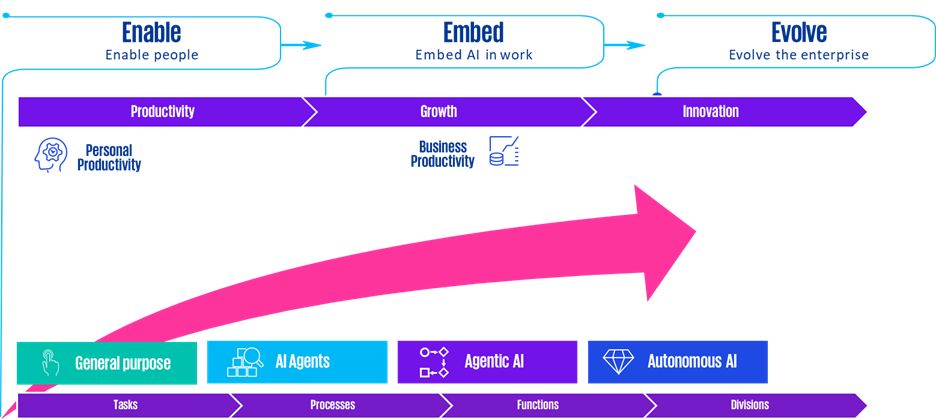Artificial Intelligence is currently an indispensable theme in organizations, resulting in a great variety of initiatives being launched here and there and experiments popping up everywhere. But how does an organization ensure that these activities focus on creating the right value? How do you determine priorities? What is the business case behind the initiatives? And does the AI approach align with the overall business strategy? Additionally, the position of AI within functions, processes, and roles must be considered – does AI work as support, or do we go 'AI-first'?
These are a few of the questions that need to be answered to gain control over the development and rollout of AI within organizations.
No real value without vision and strategy
The impact of AI is significant and leads to changes in work, roles, and services. In the coming years, many organizations will undergo transformations that will lead to the reorganization of the organizational and revenue model. To tackle this qualitatively and not to rely on loose, uncoordinated AI development and initiatives, it is important to establish a concrete, clear vision and strategy for AI. This ensures oversight, control, and a targeted development of the organization, with and for AI.
The real value of AI lies in the long term, in addition to short-term productivity gains. We see organizations going through different phases to achieve the real innovation that AI brings. It starts with supporting individual employees and leads to innovation at the business level, with various AI solutions for different phases of maturity. Do you already have an idea of where you stand and what you need?

KPMG AI Strategy
Discover how the KPMG AI Strategy can support your organization in formulating an effective AI vision and strategy for the development, implementation, and adoption of technological solutions that will guide the entire AI journey by:
- engaging your leadership teams to increase understanding and knowledge of AI, thereby making more targeted choices;
- assessing the current status to unlock the value of AI through our own acceleration programs for maturity and value;
- developing a clear strategic AI vision focused on reorganizing, redesigning, and reinventing the enterprise;
- identifying a prioritized set of use cases to deliver optimal value through AI;
- defining the AI Operating Model and essential competencies and capabilities in data and technology to activate AI at scale within your organization;
- recommending a phased roadmap with defined initiatives to accelerate your AI journey and path to value;
- developing a detailed blueprint for your own Intelligent Enterprise organization, outlining the future business model.



